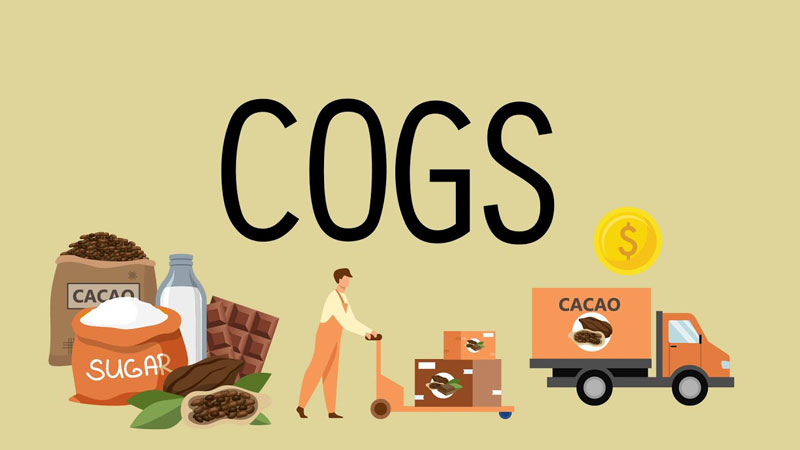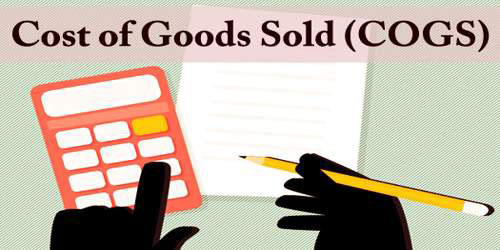An Overview of the "Cost of Goods Sold" and How to Calculate It
Advertisement
Triston Martin
Jan 10, 2024
There are several accounting phrases that company executives should be familiar with, including the term "cost of goods sold." The total cost of goods sold (COGS) encompasses all expenses directly related to the production of goods. When it comes to running a business, knowing how to manage COGS might effectively differentiate between success and failure.
Cost of Goods Sold (COGS): What Does It Mean?
COGS is the entire cost of producing or obtaining a company's products and services, where revenue is defined as total sales. Under US GAAP, COGS is an accounting term with a particular definition that requires product businesses to adopt inventory costing methods. As a result of this definition, the COGS calculation formula and guidelines are provided.
A company's gross profit and gross margin are influenced by COGS, which is why it's crucial. Gross profit is the difference between revenue and cost of goods sold (COGS), whereas gross margin is the difference between revenue and cost of goods sold (COGS). In other words, you must know the notion of COGS.
How to Calculate Cost of Goods Sold and the Effect on Profits

Investors should pay attention to the cost of items sold since it directly affects earnings. Gross profit is calculated by subtracting the cost of products sold from the income. The efficiency with which a business manages its operations is reflected in its gross profit. Because of this, if a company's cost of products sold is excessive, earnings decrease and investors become concerned about the company's overall performance.
Comparing Cost of Goods Sold to Revenue
Before investing in a company, do your homework on the industry and determine what a normal or excellent COGS ratio is concerning sales. For oil-drilling businesses, the cost per barrel to extract, process, and sell oil is a critical metric to keep in mind. For the corporation, this is essentially the cost of products sold.
When the price of oil drops, the owners or shareholders of one firm have a significant financial advantage if they can get crude oil at a cheaper cost than their competitors, because of this fact, ExxonMobil and other large oil firms can acquire assets of struggling and insolvent rivals during energy gluts.
COGS and Accounting Methods

A company's inventory costing technique determines the value of the cost of products sold. FIFO, LIFO, and the Average Cost Method are all options available to a business for determining how much inventory was sold in a given period. The third option is the First In, First Out (FIFO). For high-priced or unique objects, the Special Identification Method is employed.
FIFO
Priority is given to the most recent purchases or productions. Due to price increases over time, FIFO companies sell their least costly items first, which results in lower COGS than those companies that employ LIFO methods. As a result, the FIFO method's net profit grows with time.
LIFO
The most recent items in the store's inventory are sold at the top of the sales list. Larger-cost items are sold first during rising prices, resulting in a higher COGS amount. The net profit decreases with time.
The Cost-Average Approach
To value the products sold, the average of all the stock's prices, regardless of when they were purchased, is applied. This smoothing effect avoids COGS from being heavily influenced by one or more acquisitions or purchases that are extremely expensive.
Method of Unique Identification
For each period, the COGS and ending inventory are calculated using each item unit (sometimes referred to as stock or inventory). This strategy allows a firm to know what it sells and how much it costs to do so—typically utilized in businesses such as automobiles, real estate, and rare and costly gemstones.
Cost of Sales vs Cost of Goods Sold
Continuous contract services include continual revenue expenses, including raw supplies, direct labour, shipping costs, and commissions paid to sales staff. COGS cannot be claimed for these goods unless a tangible product is manufactured and sold. Some instances of "personal service firms" that do not include COGS in their income statements may be seen on the IRS's website. Doctors, attorneys, carpenters, and painters are among them.
Many businesses that provide services also sell items. There are many examples of businesses that provide services and sell goods and services. These include aeroplanes and hotels. This is a type of product, and these corporations have stockpiles of this type of merchandise. COGS can be listed on income statements and claimed for tax reasons by both sectors.
Expenses vs Cost of Goods Sold
Operating expenses and COGS (cost of goods sold) are considered while running a firm. However, on the revenue statement, costs are categorized. An OPEX expense is not directly related to creating products or services, as COGS are. SGA (sales, general and administrative) costs are usually included separately under operational expenditures. Non-product-related SG&A expenses, such as overhead costs, are included.







